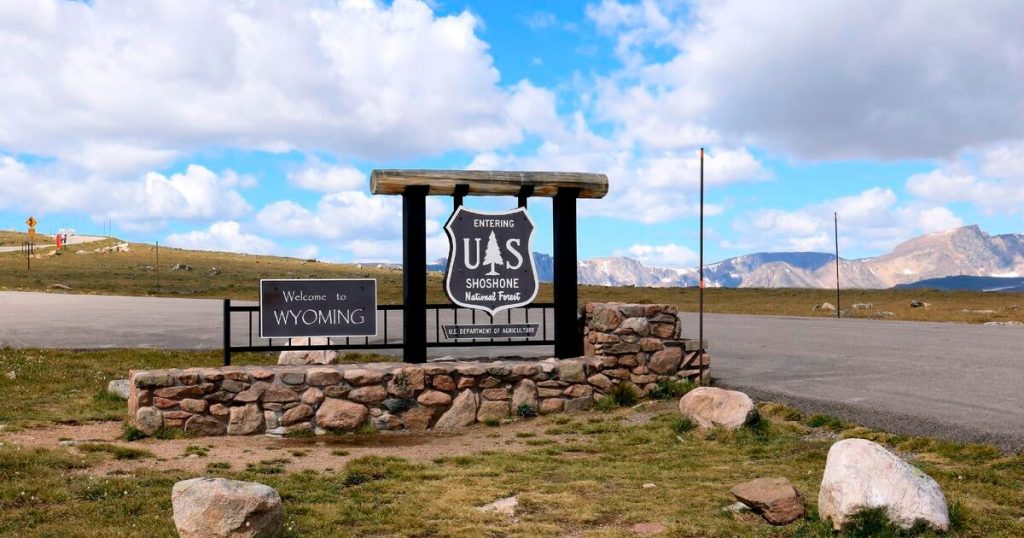Recent job cuts at the Forest Service have raised concerns about the future management and accessibility of national forests across the United States. Among those impacted are employees from Wyoming’s Shoshone National Forest, the nation’s first federally protected forest, where vital services for visitors may soon disappear due to personnel shortages. As authorities struggle with tighter budgets amid increasing wildfires, the ramifications of these layoffs could be far-reaching for the preservation of natural resources and public safety.
| Article Subheadings |
|---|
| 1) Impact of Job Cuts on Forest Management |
| 2) Personal Stories from the Shoshone National Forest |
| 3) Consequences for Visitors this Season |
| 4) Wildfires and the Reductions in Firefighting Workforce |
| 5) Future Outlook for Forest Services |
Impact of Job Cuts on Forest Management
The recent job cuts at the Forest Service have raised significant concerns about the effectiveness of management within the nation’s forests. The U.S. National Forest System oversees 154 national forests, covering over 193 million acres. However, with a reduction in workforce, the ability to manage these lands sustainably has come under scrutiny. In a tight budget environment, Forest Service officials have pointed to performance issues as a reason for the terminations, yet many former employees and the public believe this is a facade for deeper problems within the agency.
Personal Stories from the Shoshone National Forest
Among those affected by the layoffs are former employees of Shoshone National Forest, including Dalyn Grindle, Jack Corney, and Tim Leedy. Each expressed disbelief at the reasons cited for their dismissals—poor job performance—arguing that this does not reflect their dedication to their roles. “It’s not the real reason,” Grindle stated, echoing sentiments of disillusionment with management practices. Leedy added, “I put my heart and soul into that job, and that’s just not true.” These personal accounts highlight the emotional toll of such decisions on the workers who have dedicated their careers to preserving these natural spaces.
Consequences for Visitors this Season
As visitors prepare for the summer season, the repercussions of staffing cuts will likely be felt across national forests. The Shoshone National Forest, a hub for activities like hiking, biking, and snowmobiling, traditionally provides crucial visitor services, including maintaining trails and campgrounds. The local ranger station in Lander, Wyoming, once a go-to resource for camping advice and safety tips, will be unstaffed and unable to provide support for adventurers. Corney mentioned that essential tasks such as trash collection and trail clearance will be severely impacted, diminishing the experience for those looking to enjoy the wilderness. “That’s just not going to happen this year,” he warned.
Wildfires and the Reductions in Firefighting Workforce
At a time when wildfires are becoming increasingly fierce and frequent across the nation, the reduction in workforce is particularly troubling. Among those laid off are trained firefighters who have served on the front lines of combating these blazes. The Firings come during a relentless fire season, raising worries about the preparedness of the Forest Service to respond effectively to emergent wildfire scenarios. Grindle, Corney, and Leedy, being experienced firefighters themselves, now find themselves unavailable should a fire break out in the forest, raising significant concerns about forest safety and emergency responses.
Future Outlook for Forest Services
The future of the Forest Service remains uncertain as budgetary constraints continue to challenge the agency’s ability to function. Stakeholders, including environmental organizations and local officials, are advocating for restoration of funds to ensure that national forests can be adequately managed and protected. The lack of personnel not only hampers day-to-day operations but could also compromise long-term conservation efforts. As the public continues to voice concerns about access and safety, the Forest Service must navigate these difficult waters to maintain both funding and public trust.
| No. | Key Points |
|---|---|
| 1 | Job cuts at the Forest Service could jeopardize forest management and public safety. |
| 2 | Former employees express deep concern over layoffs, claiming performance issues are not the actual cause. |
| 3 | The lack of staff may lead to inadequate maintenance of trails and public facilities, affecting visitor experiences. |
| 4 | Reductions in trained firefighting personnel raise alarm regarding wildfire preparedness and response. |
| 5 | The future of national forests hangs in the balance as stakeholders call for increased funding and resources. |
Summary
In summary, recent layoffs at the Forest Service present substantial challenges to the management of national forests, raising concerns over public safety and environmental stewardship. The testimonies of displaced employees shed light on the emotional and operational impacts of these decisions. As summer approaches, visitors may experience a drastically altered landscape, compounded by the increasing threat of wildfires. The crucial need for funding and workforce restoration remains paramount to preserve the vital services that protect both nature and the public.
Frequently Asked Questions
Question: Why were Forest Service employees laid off?
The Forest Service cited poor job performance as the reason for the layoffs, though affected employees and others suggest deeper issues related to budget constraints.
Question: What impact will the layoffs have on visitors to national forests?
Visitors may encounter reduced facilities and maintenance, with fewer rangers available for guidance, safety tips, or support on trails and campgrounds.
Question: How do staff reductions affect wildfire management?
Staff cuts have eliminated trained firefighters from active duty, creating concerns about the ability to effectively respond to wildfires during a time of increasing fire activity.


